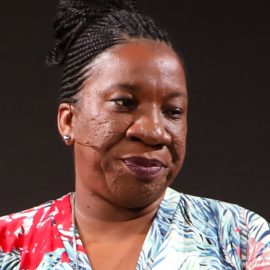

This article is an excerpt from the Shortform book guide to "If You Tell" by Gregg Olsen. Shortform has the world's best summaries and analyses of books you should be reading.
Like this article? Sign up for a free trial here.
When was Shelly Knotek arrested? Is Shelly Knotek still in prison?
If You Tell by Gregg Olsen ends his book about murderer Shelly Knotek by depicting her last years abusing people, the lead-up to her arrest, and where she is now. Many will be surprised to learn that Shelly was released from prison in 2022.
Keep reading if you want to know about Shelly Knotek’s arrest and what’s happened since.
The Lead-Up to Shelly Knotek’s Arrest
Is Shelly Knotek still in prison? This question can be answered only by going back to the first time someone was brave enough to report Shelly. According to Olsen, the first time anyone in the family went to the police about the Knoteks’ activities was in 2001, while Ron Woodworth was still alive. Her daughter Nikki, then 26, had gone to stay with her grandmother Lara, and, the second day there, Nikki told her what happened to Kathy Loreno. Lara was shocked, but she knew Nikki was honest and believed her.
They reported the information to the police and faxed a detailed account of what happened to Deputy Jim Bergstrom of the Pacific County Sheriff’s Department. Nikki thought things would change, but after the police were unable to reach her sister Sami—then 22 and still away at college—to verify Nikki’s story, they didn’t follow up on the case. When Lara followed up months later to ask about Kathy’s case, Deputy Bergstrom told her it had gone cold, that he was in the middle of a big trial and would get back to work on it when he could.
(Shortform note: In an investigation, police often interview anyone who may have information that could prove helpful in the case. While it can hamper an investigation if an officer can’t get in touch with a witness to verify a story, Sami was not the only person they could have interviewed. Despite the severity of the reported crime, the police failed to interview or contact any other witnesses in Kathy Loreno’s case, allowing the case to go cold after they couldn’t contact Sami. Additionally, while there’s no firm definition of “cold case” that is used in all states, the authorities didn’t explore all the possible investigative leads, suggesting that it shouldn’t have been considered a cold case.)
The weekend after Ron died, Shelly allowed her youngest daughter Tori to go spend the weekend with Sami in Seattle. Together they met Nikki for lunch. It was the first time Nikki and Tori had seen each other in seven years. Tori was scared to see her sister again after everything Shelly had said about her, but it turned out to be a wonderful reunion, and Tori realized how badly she’d missed Nikki. She also realized how much her mother had manipulated her into hating her oldest sister.
Later during that weekend, Sami and Tori were folding laundry when Sami casually shared that their mother used to dump all her clothes out on the floor in the middle of the night and make her match everything up. After a pause, and to Sami’s dismay, Tori said their mother did that to her, too. They kept talking, and Sami realized Tori was being subjected to the same abuse she and Nikki experienced. Sami asked about Ron and realized Shelly had done the same thing to him that she’d done to Kathy. Tori then revealed that she suspected Ron was dead.
Sami told Nikki, and they decided they had to get Tori out of that home. In August of 2003, the two of them went to speak with Deputy Bergstrom again. Unlike last time, their concerns were taken seriously now—though it was too late to save Ron.
(Shortform note: It’s possible that if Bergstrom had pursued the investigation when it was first reported to him in 2001, Ron Woodworth’s life could have been saved. Unfortunately, while the prevailing belief is that the police exist to protect people, the Supreme Court ruled in 1989 that police in fact don’t have a duty to protect anyone from harm. This ruling has been the precedent for many other cases in which police were found to not be liable for harm that occurred as a result of police negligence or inaction.)
A few days later, Tori was removed from the home by Child Protective Services (CPS). Shelly was furious and panicked, and she sent her husband Dave to go see Tori at CPS, but he couldn’t find her. He went to the police station instead. They asked him to consent to an interview, and Dave, still believing that neither he nor his wife had ever abused the girls, agreed. He didn’t expect them to ask about Ron and Kathy, but they did, and, eventually, he fell apart and confessed to the disposal of Ron and Kathy’s remains. As a result, though he’d refused to incriminate her, Shelly was finally arrested on August 8, 2003—Kathy Loreno’s birthday.
(Shortform note: Dave’s participation in Shelly’s abusive and deadly activities was characteristic of a compliant accomplice—his emotional bond with Shelly led him to commit acts of violence that he would otherwise never have considered. However, his continued belief that neither he nor Shelly was abusive in the face of clear evidence to the contrary demonstrates extremely delusional thinking, possibly indicative of a delusional disorder that Dave may have developed to help him rationalize what he was doing.)
Shelly Knotek’s Plea
Dave Knotek pleaded guilty to the second-degree murder of Shane Watson, the unlawful disposal of human remains, and rendering criminal assistance. Shelly Knotek took an Alford plea, pleading guilty to second-degree murder and manslaughter while maintaining her innocence.
(Shortform note: The Alford plea was first used in the 1970 case North Carolina v. Alford. The defendant Henry Alford acknowledged that the state had enough evidence to find him guilty, but he continued to assert that he didn’t commit the crime. In order to avoid a first-degree murder charge and a death sentence, he pleaded guilty to second-degree murder to receive a lesser sentence. The Alford plea allows a defendant to avoid a criminal trial and a potentially higher sentence, and it can be appealing to the state when a criminal trial would bring unwanted publicity—such as when there is police negligence involved.)
Shelly Knotek’s Sentencing & Release
Dave was sentenced to 15 years in prison. He was released in 2016. Sami and Tori have come to forgive him and have accepted him back into their lives, though Nikki can’t bring herself to do so. Shelly was sentenced to 22 years in prison and was released in 2022 at age 68.
(Shortform note: In June 2022, Dave Knotek filed a protective order against Shelly. Shelly Knotek was released from prison on November 8, 2022. She was ordered to remain under supervision for at least one year. It was difficult for Tori and Sami to forgive Dave, but, for some trauma survivors, granting forgiveness helps them move past the trauma. However, forgiving is a personal process that isn’t helpful for everyone, and pressuring abuse victims to forgive their abusers can be very damaging. Victims should never feel obligated to forgive their abusers and should only do so when it facilitates their own healing.)

———End of Preview———
Like what you just read? Read the rest of the world's best book summary and analysis of Gregg Olsen's "If You Tell" at Shortform.
Here's what you'll find in our full If You Tell summary:
- The true story about abusers and murderers Shelly and Dave Knotek
- The events leading up to Shelly and Dave's arrests and convictions
- A look into the psychology of abuse and psychopathy






